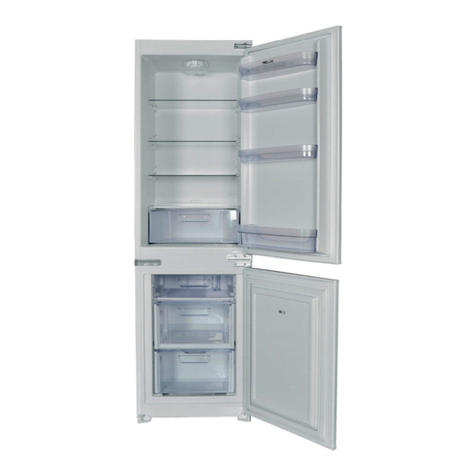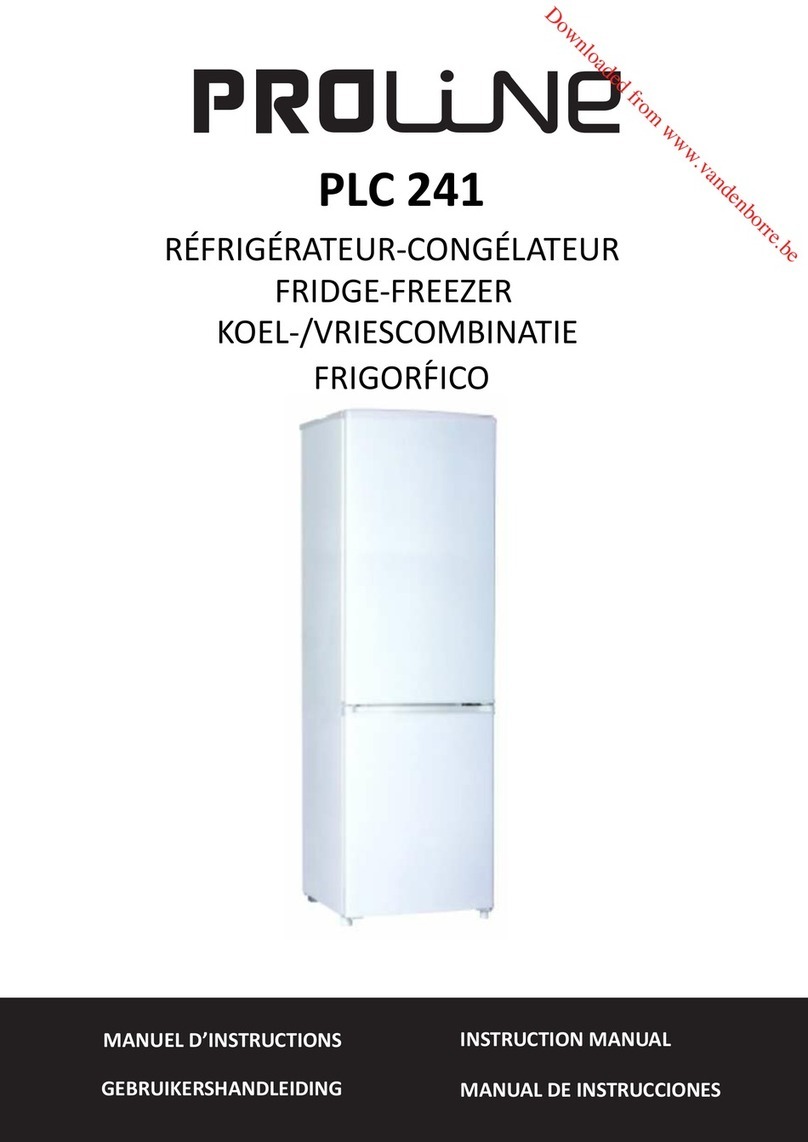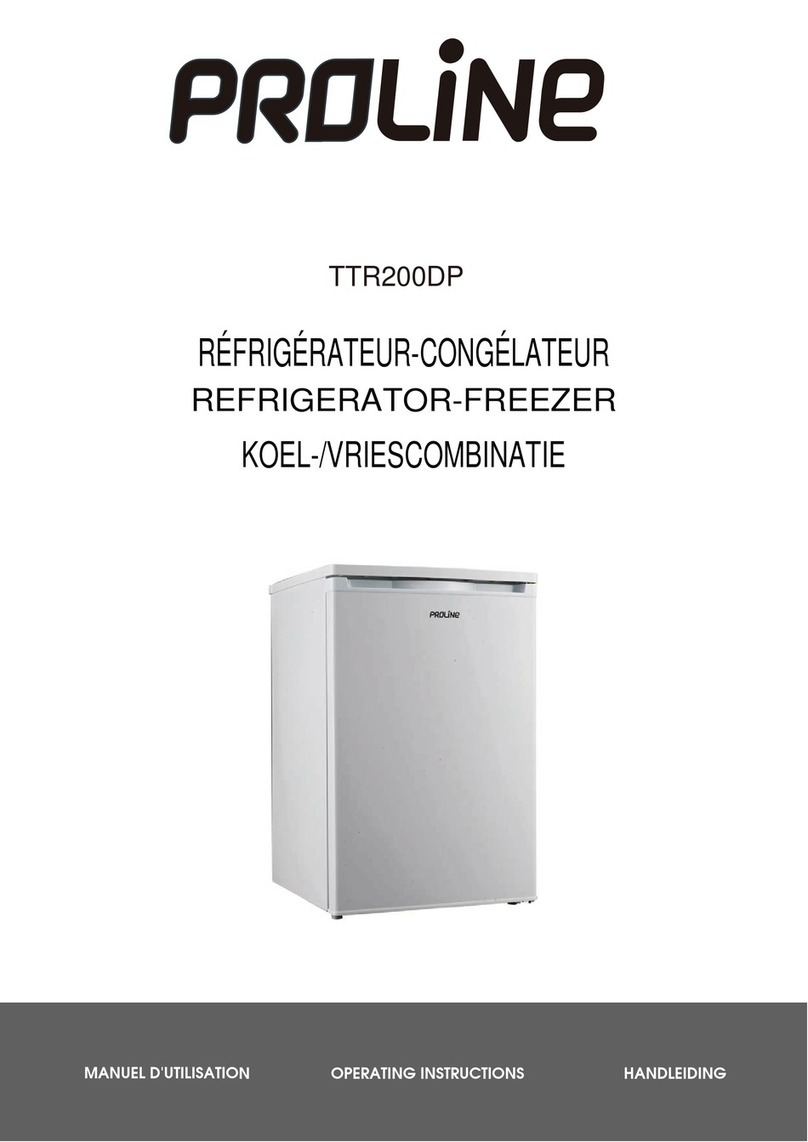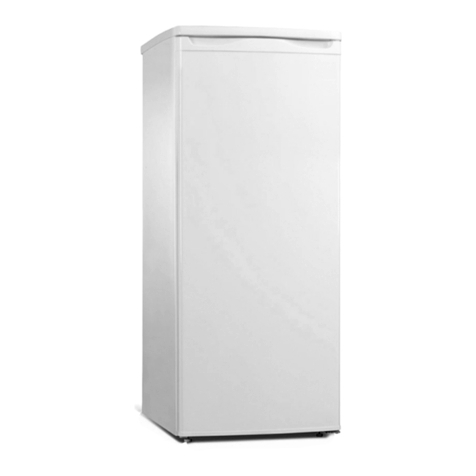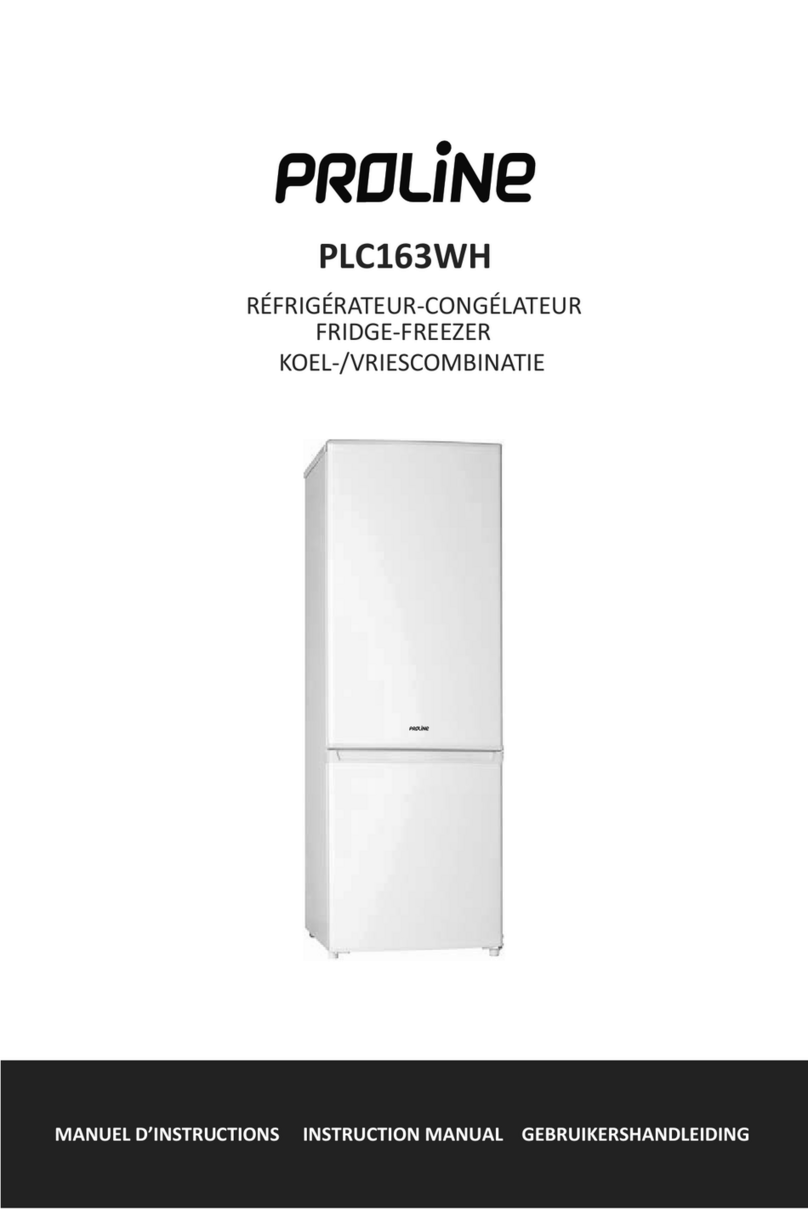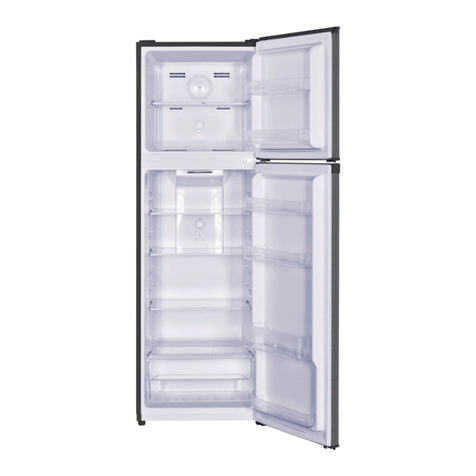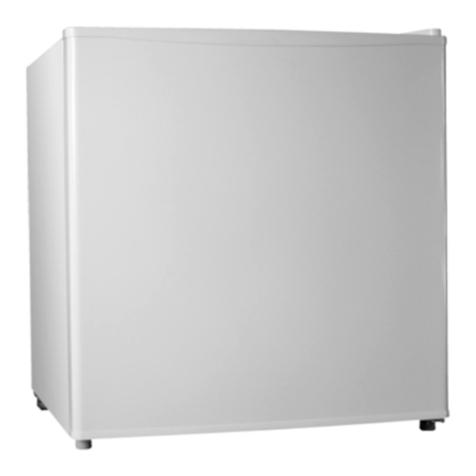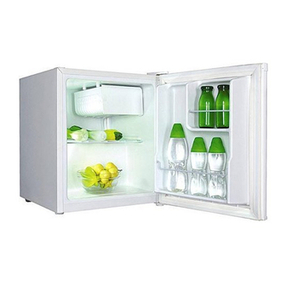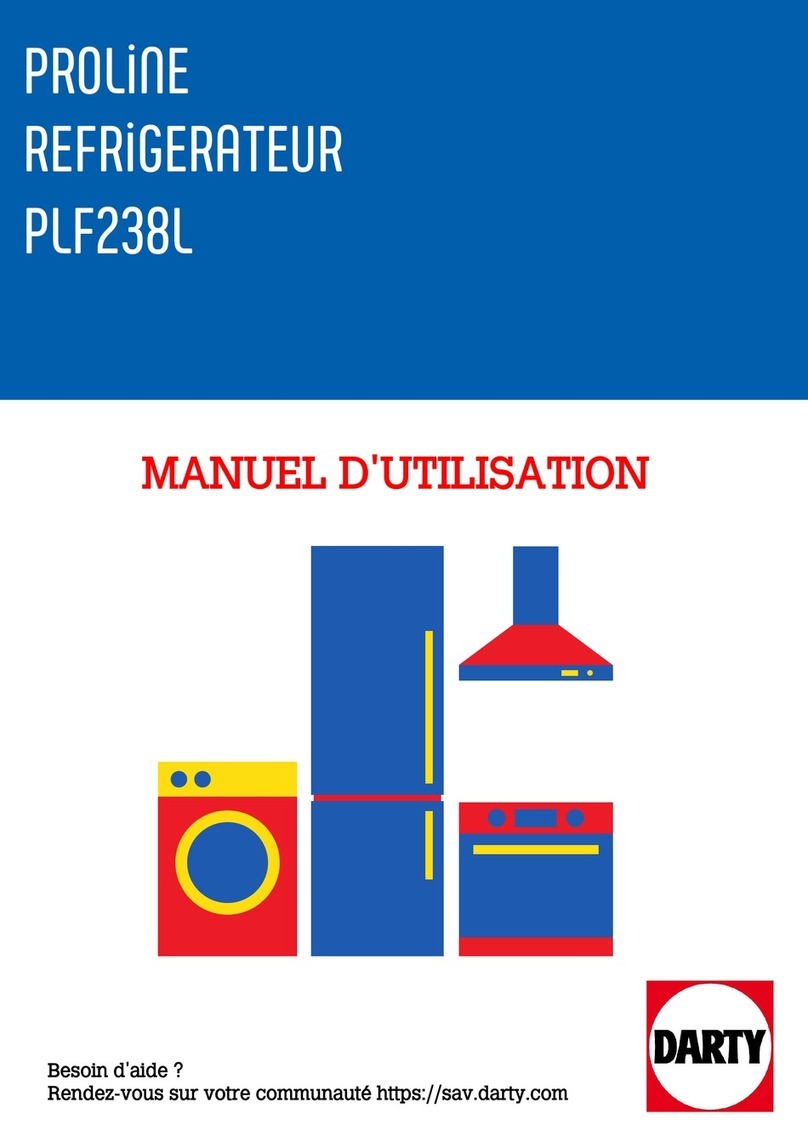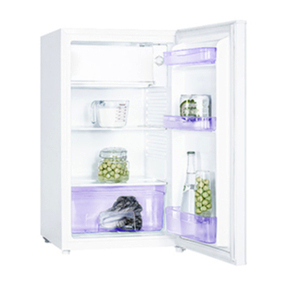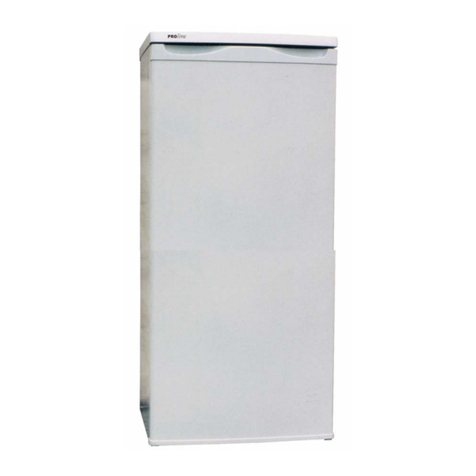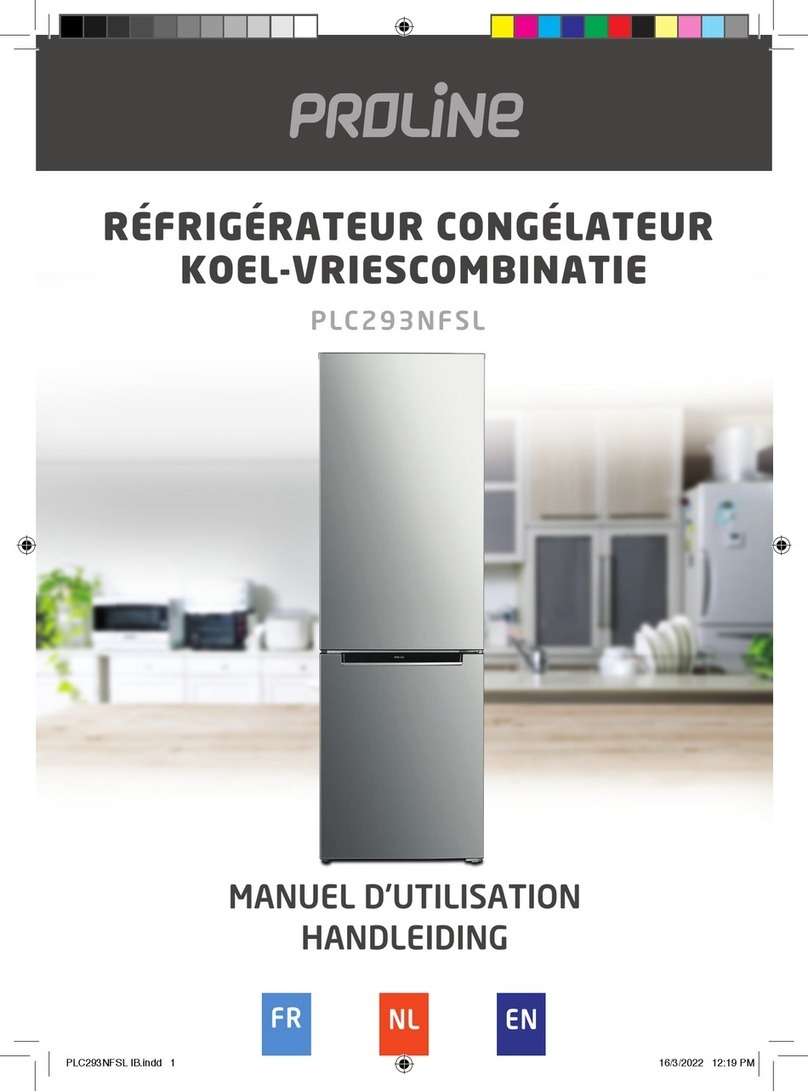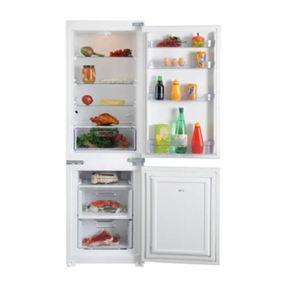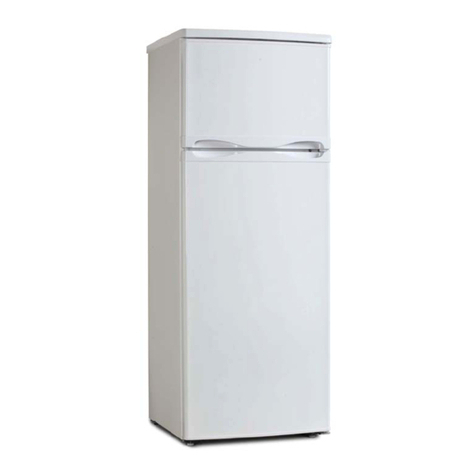5
Note: The light bulb will switch on and off automatically every time the door is opened or
closed. To replace the bulb see the section “Changing the light bulb”.
Is the Refrigerator cold enough?
If you are concerned that your Refrigerator is not being ept cold enough, and wish to
chec the temperature, you will need a special fridge/freezer thermometer available from
most supermar ets and hardware shops. Place the thermometer on the middle shelf of the
Refrigerator, where it can be read easily. Leave overnight, the temperature in the
Refrigerator should be between 0°C and 10°C and -18°C or lower in the Freezer
Compartment
Adjusting the temperature
The internal temperature of your Refrigerator is controlled by the Thermostat Control Dial.
There are 7 settings. Position 7 ma es the Refrigerator coldest. Position 1 ma es it the
warmest. To adjust the temperature, turn the Thermostat Control Dial to the preferred
setting. Position 0 will turn the Refrigerator off. Note: This will NOT disconnect from the
mains completely, to do this you must remove the plug from the mains outlet.
Noises inside the Refrigerator
If you have not owned a Refrigerator before, you may notice that it ma es some rather
unusual noises. Most of these are perfectly normal, but you should be aware of them!
GURGLING, WHOOSHING
These noises are caused by the circulation of the refrigerant liquid in the cooling system. It
has become more pronounced since the introduction of CFC free gases. This is not a fault
and will not affect the performance of your Refrigerator.
HUMMING, PURRING OR PULSATING
This is the compressor motor wor ing, as it pumps the refrigerant around the system.
hopping for chilled foods
Don’t buy in your lunch hour!
Unless you have a Refrigerator at wor to eep the food cold in the afternoon. Leaving
food in your car or at room temperature for a prolonged period of time could raise food
temperature to the level at which harmful bacteria grow.
Keep chilled foods together
When you are going around the supermar et and when you are traveling home. If you
eep all the chilled foods together they will help to eep each other cold.
Use a cool bag
Special insulated bags can be bought from most supermar ets and hardware shops.
These eep food cold for longer, but are only for getting chilled foods home, not storing it.
Unwrap as soon as you get home
Always unpac and place chilled foods in the Refrigerator before storing dry food-stuffs.
Tips for keeping food perfect in the Refrigerator
Ta e extra care with meat and fish
Coo ed meats should always be stored on a shelf above raw meats to avoid bacterial
transfer. Keep raw meats on a plate which is large enough to collect juices and cover it
with cling film or foil.
Leave space around food
This will allow cold air to circulate around the Refrigerator.
Wrap up food!
